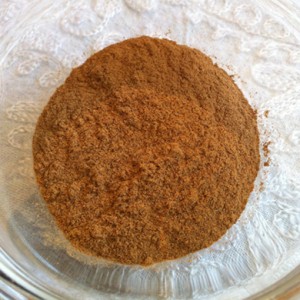Cinnamon – good for more than just buns

Mmmm… cinnamon buns! Traditional combinations of foods so often have good reasons for those combinations. Cinnamon buns are a great example of this; since cinnamon is used wholistically for regulating blood sugar, and cinnamon buns have a lot of sugar in them.
Traditionally, it is used for weak digestion, poor appetite, flatulence, nausea, and many other digestive issues, including diarrhea. It has also been used for Candida overgrowth. The oil of cinnamon has even been used for body lice and chest complaints. Another traditional use has been to improve circulation, particularly for people who tend to have cold hands and feet.
Modern studies continue to back up many of the traditional uses:
• Water extracts of cinnamon help reduce risks from diabetes (incl. kidney disease ) and cardiovascular disease. Cinnamon reduces blood glucose concentrations, increases the rate at which cells take up glucose, improves the function of insulin receptors, enhances insulin signaling, and regulates gene expression involving inflammatory, insulin, and lipoprotein signaling pathways.
• It has benefits in high cholesterol, particularly in diabetics, improving LDL cholesterol and total cholesterol
• Cinnamon may be a benefit in Alzheimer’s disease, since a water extract was found to inhibit certain indicators of Alzheimer’s disease
• As an anti-microbial, cinnamon is a beneficial antifungal, particularly against fluconazole (a drug) susceptible Candida species. A similar species C. cassia damages the cell membranes of E. coli and Listeria monocytogenes.
• Cinnamon may also have a use in leukaemia, having demonstrated the ability to cause leukemia cell death and regulate the progression of leukaemia cells.
• For head lice, cinnamon is only slightly less effective than d-phenothrin or pyrethrum, two drugs normally used to treat head lice.
However, what you may not realize is that adulteration of cinnamon is common. The cinnamon you get in supermarkets is not the same as real cinnamon (Cinnamomum zeylanicum). The cinnamon in supermarkets is C. cassia or sometimes a blend of the two. The problem with this is that C. cassia has higher amounts of coumarin (a precursor to warfarin, a blood thinner) than C. zeylanicum. Cassia is also not as sweet (relatively speaking) as C. zeylanicum.
One of the ways I frequently use real cinnamon is as a tea. ¼ tsp to 1 cup of boiling water, and simmer for 10 to 15 minutes. Sometimes I’m lazy and just boil the kettle and let the cinnamon steep in the hot water. To this I add honey to taste, but you can use Stevia instead. I find it a tasty addition to many a morning routine.
For more information about the studies done on cinnamon you can go here.
If you are interested in purchasing sweet cinnamon (C. zeylanicum) see our store.
~ Elizabeth
Note: this article was originally published in the May 2010 Newsletter
Reference:
- Aging Cell. 2010 Feb;9(1):40-53
- J Toxicol Environ Health A. 2009;72(5):295-300
- PLoS One. 2008 Sep 15;3(9):e3211
- Curr Aging Sci. 2008 Mar; 1(1):4-9
- Planta Med. 2009 Oct 29.
- Journal of the American College of Nutrition, Vol. 28, No. 1, 16-21 (2009(Am J Clin Nutr. 2007 Jn;85(6):1552-6 /
- Hrm Res 1998;50:177-182
- Horm Metab Res 2004; 36(2): 119-125
- Horm Metab Res. 2009 Jul;41(7):516-22.Diabetes Care December 2003 vol. 26 no. 12 3215-3218
- J Am Board Fam Med. 2009 Sep-Oct;22(5):507-12.
- J Alzheimers Dis. 2009 Jul;17(3):585-97.
- Can J Microbiol. 2008 Nov;54(11):950-6.
- J Food Prot. 2006 May;69(5):1046-55.
- J Nutr Biochem. 2009 Aug;20(8):614-20. Epub 2008 Oct 5.
- Int J Parasitol. 2005 Dec;35(14):1595-600. Epub 2005 Sep 15
- Food Addit Contam Part A Chem Anal Control Expo Risk Assess. 2008 Nov;25(11):1297-305

